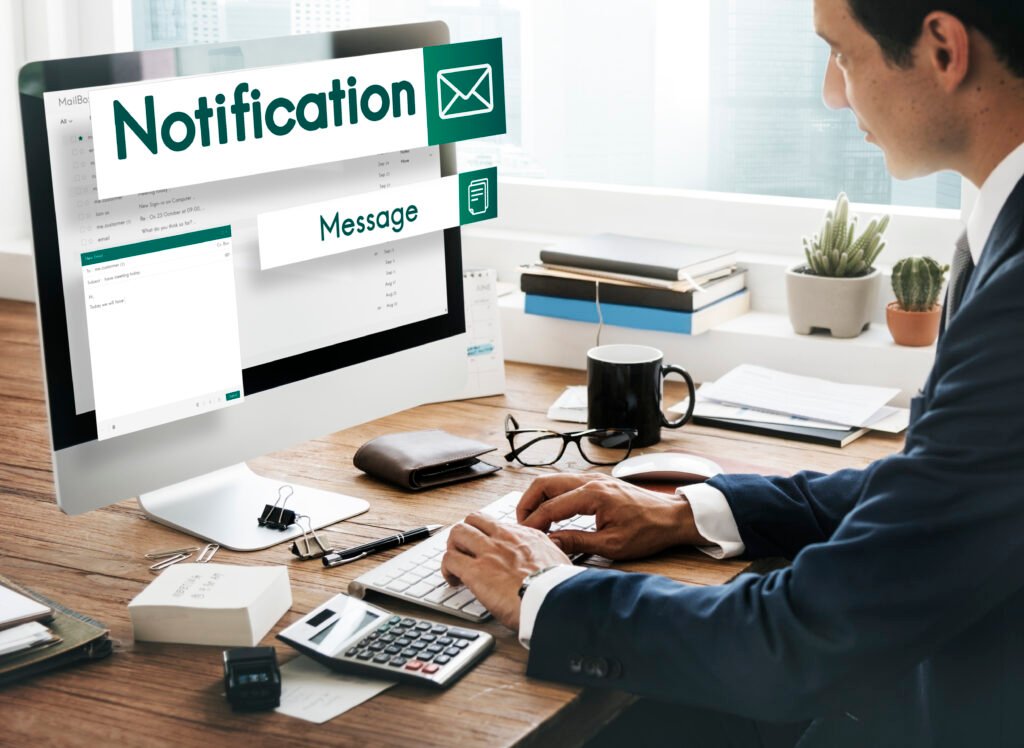Why a Networking Message Generator matters
A Networking Message Generator transforms thinking into action. Instead of drafting each note from scratch, you create data-driven templates and personalization rules that produce messages tailored to recipients. Benefits:
- Consistency: predictable, on-brand outreach.
- Scale: reach dozens or thousands with individualized touches.
- Measurability: test, iterate, and optimize phrasing, subject lines, and cadence.
- Speed: more conversations started, less time wasted.
Use the focus word — Networking Message Generator — in your SEO, site copy, and onboarding so readers searching for the term find your resource quickly.

Anatomy of a high-conversion networking message
Every message from your Networking Message Generator should contain these core elements:
- Channel-specific subject / opener — email subject, LinkedIn first line, or DM opener.
- Personal hook (5–12 words) — a fact or compliment that shows you did basic research.
- Value proposition (1 short sentence) — what you offer or why connecting benefits them.
- Low-friction CTA (call to action) — ask for 10–15 minutes, share a resource, or request an intro.
- Social proof (optional, one short token) — company name, mutual contact, or recent article.
- Polite sign-off + contact — short and human.
A Networking Message Generator should let you configure these elements as personalization tokens (e.g., {{FirstName}}, {{Company}}, {{MutualConnection}}) and insert them automatically.
Table of Contents
Best practices before you start the generator
- Keep messages ≤ 120 words for email intros; ≤ 3 short paragraphs for LinkedIn; ≤ 2 lines for DMs.
- Use first names. Use one specific detail to personalize.
- Avoid clichés like “I hope you’re well” — replace with a direct personalization hook.
- Always include an easy next step (e.g., “15 minutes next week?”).
- Respect privacy and spam laws: give an unsubscribe option for mass email; follow GDPR/CCPA guidance when storing data.
- Track opens, clicks, replies — not just sends.
10 Magnetic Networking Message Generator templates (ready to use)
Below are ten templates your Networking Message Generator can output. Each template includes: purpose, channel, personalization tokens, a sample message, and why it works. Keep the generator’s tokens simple and test variations.
Template 1 — Quick Value Intro (Cold email / LinkedIn)
Purpose: Short intro that offers immediate value.
Tokens: {{FirstName}}, {{Company}}, {{ValueAsset}} (e.g., a one-pager or case study)
Sample message:
Subject: Quick idea for {{Company}}
Hi {{FirstName}},
I noticed {{Company}} just launched [initiative]. I put together a one-pager on how companies reduce X by 15% — would you like a copy?
If helpful, I can send it over or jump on a quick 10-minute call.
Best,
{{YourName}}
Why it works: Leads with helpfulness, not ask. The generator populates {{ValueAsset}} automatically based on recipient industry.
Template 2 — Mutual Connection Hook (Warm touch)
Purpose: Use a shared contact to warm the bridge.
Tokens: {{FirstName}}, {{MutualConnection}}, {{IntroReason}}
Sample message:
Hi {{FirstName}},
{{MutualConnection}} suggested I reach out about {{IntroReason}}. I’ve helped similar teams at {{SimilarCompany}} scale Y. Any chance you have 15 minutes next week to explore an idea?
Cheers, {{YourName}}
Why it works: Trust by association. The generator can pull known mutual connections from LinkedIn/CRM.
Template 3 — Content Hook (Follow-up after article/announcement)
Purpose: Engage after they publish content.
Tokens: {{FirstName}}, {{ArticleTitle}}, {{Compliment}}, {{Question}}
Sample message:
Hi {{FirstName}},
Loved your piece on “{{ArticleTitle}}” — especially the point about Z. Quick question: how are you approaching X right now? Would love to compare notes briefly.
— {{YourName}}
Why it works: Shows attention and asks for an expert opinion — flattering and low-friction.
Template 4 — Event Follow-up (After meeting/speaking)
Purpose: Convert event hellos into a meeting.
Tokens: {{FirstName}}, {{EventName}}, {{SharedMoment}}
Sample message:
Hi {{FirstName}},
Great meeting you at {{EventName}} — I enjoyed our chat about {{SharedMoment}}. I promised to send the resource on A; attaching it here. Do you have 10–15 minutes to talk about how this could help at {{Company}}?
Thanks, {{YourName}}
Why it works: Context reminder + value deliverable increases response.
Template 5 — The Mutual Benefit Pitch (B2B outreach)
Purpose: Propose a low-risk collaboration.
Tokens: {{FirstName}}, {{Company}}, {{BenefitOne}}
Sample message:
Hi {{FirstName}},
I work with companies like {{Company}} to improve {{BenefitOne}}. If you’re open, I can share a simple plan that won’t cost you anything to evaluate — 10 minutes is all I need. Interested?
Best, {{YourName}}
Why it works: Frames ask as low-risk and clearly states the benefit.
Template 6 — The Short Social Proof Nudge
Purpose: Use social proof to prompt curiosity.
Tokens: {{FirstName}}, {{SimilarCompany}}, {{Result}}
Sample message:
Hi {{FirstName}},
We helped {{SimilarCompany}} increase {{Result}} — curious if that’s relevant to you. 10 minutes next week?
— {{YourName}}
Why it works: Very concise; curiosity-driven.
Template 7 — The Resource Offer (Lead magnet)
Purpose: Offer a genuinely useful resource.
Tokens: {{FirstName}}, {{Resource}}
Sample message:
Hi {{FirstName}},
I built a short checklist: “5 steps to X” and thought it might help at {{Company}}. Want me to email it over?
Cheers, {{YourName}}
Why it works: People like free, relevant tools. Generator attaches the right resource based on role.
Template 8 — The Ask for Advice (Ego-driven)
Purpose: Warm up via asking for input.
Tokens: {{FirstName}}, {{Topic}}
Sample message:
Hi {{FirstName}},
Quick question: what’s your take on {{Topic}}? I’m compiling perspectives and would value one sentence from you. Can I email a prompt?
Thanks, {{YourName}}
Why it works: Low time commitment; flattering.
Template 9 — Short Multi-Channel Sequence (DM → Email)
Purpose: Combine DM + email to get attention.
Tokens: {{FirstName}}, {{Company}}
Sequence:
- DM: “Hi {{FirstName}} — quick Q: is {{Company}} hiring for X this quarter?”
- Follow-up email (same day): use Template 1 with more context and subject line tying to DM.
Why it works: Short DM primes the recipient to expect email — increases open rate.
Template 10 — The Polite Breakup (If no replies)
Purpose: Reawaken or gracefully exit.
Tokens: {{FirstName}}, {{LastContactDate}}
Sample message:
Hi {{FirstName}},
I haven’t heard back since {{LastContactDate}} — I’ll assume now isn’t the right time. If it helps, here’s a short note summarizing how I can help: [one-sentence value]. If you’d like to revisit in the future, happy to reconnect.
Best, {{YourName}}
Why it works: Polite, gives closure, preserves relationship for the future.
How to configure your Networking Message Generator (step-by-step)
- Collect tokens: FirstName, JobTitle, Company, MutualConnection, RecentActivity, Industry, PainPoint. Source these from LinkedIn, CRM, or event lists.
- Map templates to channels: assign templates 1–10 to Email, LinkedIn, Twitter/X, or SMS where appropriate.
- Set personalization rules: e.g., if RecentActivity contains “published”, use Template 3.
- Define fallback copy: if a token is missing, insert a neutral phrase (e.g., {{Company}} fallback → “your team”).
- Establish cadence: initial touch → 3 follow-ups over 2–3 weeks → breakup message.
- Enable tracking: integrate UTM tags, open tracking, and reply tracking with your CRM.
- A/B test subject lines and personalization hooks: rotate variations to learn what works.
Technical details: deliverability, automation, and metrics
- Deliverability: keep sending reputation high. Warm new sending domains, authenticate with SPF, DKIM, DMARC. If you send from a personal domain, monitor bounce rates.
- Rate limits: respect provider daily limits (Gmail, Outlook). For large-scale outreach, use a verified ESP (email service provider) or outbound tool to prevent blocks.
- Personalization tokens: validate tokens before send. Your Networking Message Generator should run a token-check script to avoid “Hi {{FirstName}}” errors.
- Throttling & rotation: send smaller daily volumes, rotate subject lines and openings to avoid spam filters.
- Automation & CRM: use tools (Zapier, Make, native integrations) to push replies into CRM and mark a lead as “engaged.” Ensure two-way sync to prevent duplicate outreach.
- Metrics to track: open rate, reply rate, meeting booked rate, positive/negative sentiment, deliverability, and downstream conversion (e.g., revenue).
- A/B testing strategy: test one variable at a time — personalization hook, subject line, CTA timing. Run tests on small samples before full roll-out.
Tools and products that complement your Networking Message Generator
These are suggested products to make your outreach cleaner, more professional, and easier to manage. Add your affiliate links later where indicated.
| Product category | Suggested items (add affiliate links later) | Why it helps |
| Premium business cards | Moo business card packs — premium finishes | Leaves memorable in-person impression after a digital reachout |
| Business card holders | Leather business card holder / premium card cases | Keeps cards tidy and gives a professional touch when handing them out |
| Portable scanning | Portable card scanner | Quickly digitize contacts and feed them into your CRM |
| Smartphone stands/tripods | Smartphone tripod / stand | Record quick, polished video intros to include in messages |
| Productivity tools | Productivity planner / email productivity tools | Helps schedule follow-ups and manage sequences |
| LinkedIn learning | LinkedIn cheat sheet books / templates | For improving profile hooks and headline optimization |
Placeholder note: If you plan to add Amazon affiliate links, substitute the product names above with your affiliate-enabled URLs when you paste this into WordPress.
Workflow example: from event to CRM to meeting (practical)
- At event: exchange cards and scan with portable card scanner. Tag contact with Event:Conf2025.
- Generator cue: rule triggers Template 4 for event follow-ups.
- Send personalized email: subject line uses {{EventName}} to increase open.
- If no reply in 3 days: generator sends Template 9 DM and Template 6 email sequence.
- If reply: mark as engaged in CRM, create a 15-minute meeting using calendar link.
- Record result: update the metric “meeting booked” and attribute to the outreach sequence.
Common mistakes and how the Networking Message Generator prevents them
- Sending bland, one-size-fits-all messages: generator enforces personalization tokens.
- Forgetting follow-ups: scheduler automates a tested cadence.
- Incorrect tokens causing awkward copy: pre-send validation catches empty tokens and replaces fallback text.
- Violating privacy laws: generator can append opt-out lines for mass emails and store consent flags.
Advanced tactics & experiments to improve reply rate
- Use video snippets: short 20–30 second personalized videos (hosted privately) often increase reply rates — include a link or embed a thumbnail.
- Subject-line personalization: include company name or a specific metric ({{Company}} — 3 ideas to cut X) where allowed.
- Send micro-value first: a one-line tip or a stat relevant to recipient before pitching.
- Time-of-day sequencing: test sending at 9am local time vs 4pm; the generator should support timezone-aware sends.
- Mutual connection nudges: when possible, ask a mutual contact for an intro then send the mutual-intro template.
Related-items/info table (ready to paste into your article)
| Item | Short description | Product placeholder |
| Premium business cards | High-quality cards for in-person follow-ups | Moo business card packs (add affiliate link) |
| Business card holder | Leather or metal holder to keep cards neat | Leather business card holder |
| Portable card scanner | Quickly digitizes cards into CSV/CRM | Portable card scanner |
| Smartphone tripod | Record clean video intros for messages | Smartphone tripod / stand |
| Productivity planner | Plan follow-ups and cadence | Productivity planner |
| Email productivity tool | Templates, sequences, and send limits | Email productivity tools |
| LinkedIn cheat sheet | Quick templates and optimization tips | LinkedIn cheat sheet books |
FAQs — Networking Message Generator (5–7 questions)
Q1: What is a Networking Message Generator?
A Networking Message Generator is a system (software + templates + tokens) that automatically composes personalized outreach messages across channels (email, LinkedIn, DM), using pre-built templates populated with recipient-specific data.
Q2: How much personalization is enough?
Aim for one specific data point (company news, mutual connection, article) plus name and job title. Too many personalized facts can read creepy; too few feels generic.
Q3: Is it spammy to use templates?
No—if you personalize key tokens and limit volume, templates improve quality and consistency. Always include an unsubscribe option for bulk email and follow privacy laws.
Q4: Can I automate follow-ups?
Yes. A proper Networking Message Generator schedules timed follow-ups and can pause automation when a reply is detected. Make sure your automation marks engaged leads quickly to avoid extra messages.
Q5: Which channels convert best?
Email + LinkedIn combo tends to be the highest-converting for B2B. For B2C or creators, short DMs or personalized video messages can perform better. Test channels for your audience.
Q6: How do I measure success?
Track reply rate, meeting booked rate, response sentiment, and downstream conversions. Also measure subject-line open rates and A/B test changes.
Q7: Any legal risks?
Yes — be mindful of spam laws (CAN-SPAM, GDPR) and never send to purchased lists without consent. Always provide opt-outs and store consent evidence where required.





